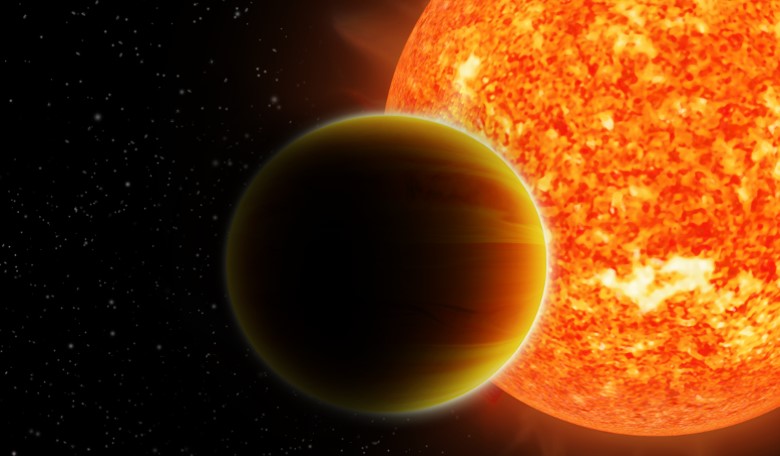Scientists studying the formation of hot Jupiters around Sun-like stars, have found three such gas giants in an open star cluster suggesting that the main formation route for this type of planet is via strong encounters with other stars or binary companions, resulting in planet-planet scattering that can persist for very long timescales.
Since 2008, an international team of researchers has used high-precision radial velocity (RV) measurements to detect the signatures of hot Jupiters around main-sequence stars – stars such as our Sun – and evolved stars to determine how stellar mass and chemical composition affects the formation of these gaseous giants.
Most hot Jupiters typically whip around their host star in less than 10 days in a near circular orbit (known as a low eccentricity), and a sizeable proportion of the 2300+ exoplanets detected so far with Kepler belong to this class of planet. However, despite being found in such large numbers, not much is known about them. It is believed that these massive orbs of gas are unlikely to have formed in situ so close to their host stars and instead formed beyond the snow line, where abundant material allowed the planet core to grow. Through some as yet unexplained process, the planet then migrates inwards, collecting the gaseous bulk that makes up its mass and forms a stable orbit close to its central star.
Two leading theories to explain the mechanisms involved in hot Jupiter migration are gravitational scattering caused by other planets and dynamical interactions with the still present circumstellar disk. In simulations of growing planetary systems, models have revealed that a jam-packed nascent environment can become strongly destabilised by stellar encounters, thus favouring a formation process for hot Jupiters.
Now, in a paper submitted by A Brucalassi of the Max Planck Institute for Extraterrestrial Physics in Germany, its authors report on the high rate of hot Jupiters found within M67, an open galactic cluster in the constellation of Cancer. M67 is a well studied star cluster and recent estimates of the age range of its inhabitants imply that the stars are younger than the Sun (at around 4 billion years). The team state that the high rate – three hot Jupiters around a sample study of 66 main-sequence and turnoff stars – is much higher than what has been discovered in the field, either with RV surveys or by transits.
Compared with Kepler statistics, which predicts that around 0.4 percent of stars have hot Jupiters, the teams detection rate is 5.6 percent (+5.4, -2.5 percent) for single stars and 4.5 percent (+4.5, -2.5 percent) for the full simple. The team state that their results, coupled with the non-zero eccentricity of the planet orbits, are qualitatively consistent with formation by a strong encounter with singular or binary stars, thus ruling out other theories such as an excess due to high metallicity or high stellar masses. This could be due to the number of binary stars in the cluster as simulations (undertaken by other researchers), have shown that a higher fraction of binaries will strongly enhance the probability of hot Jupiter formation and therefore their frequency.
For more information on this research, see http://arxiv.org/pdf/1606.05247.pdf











